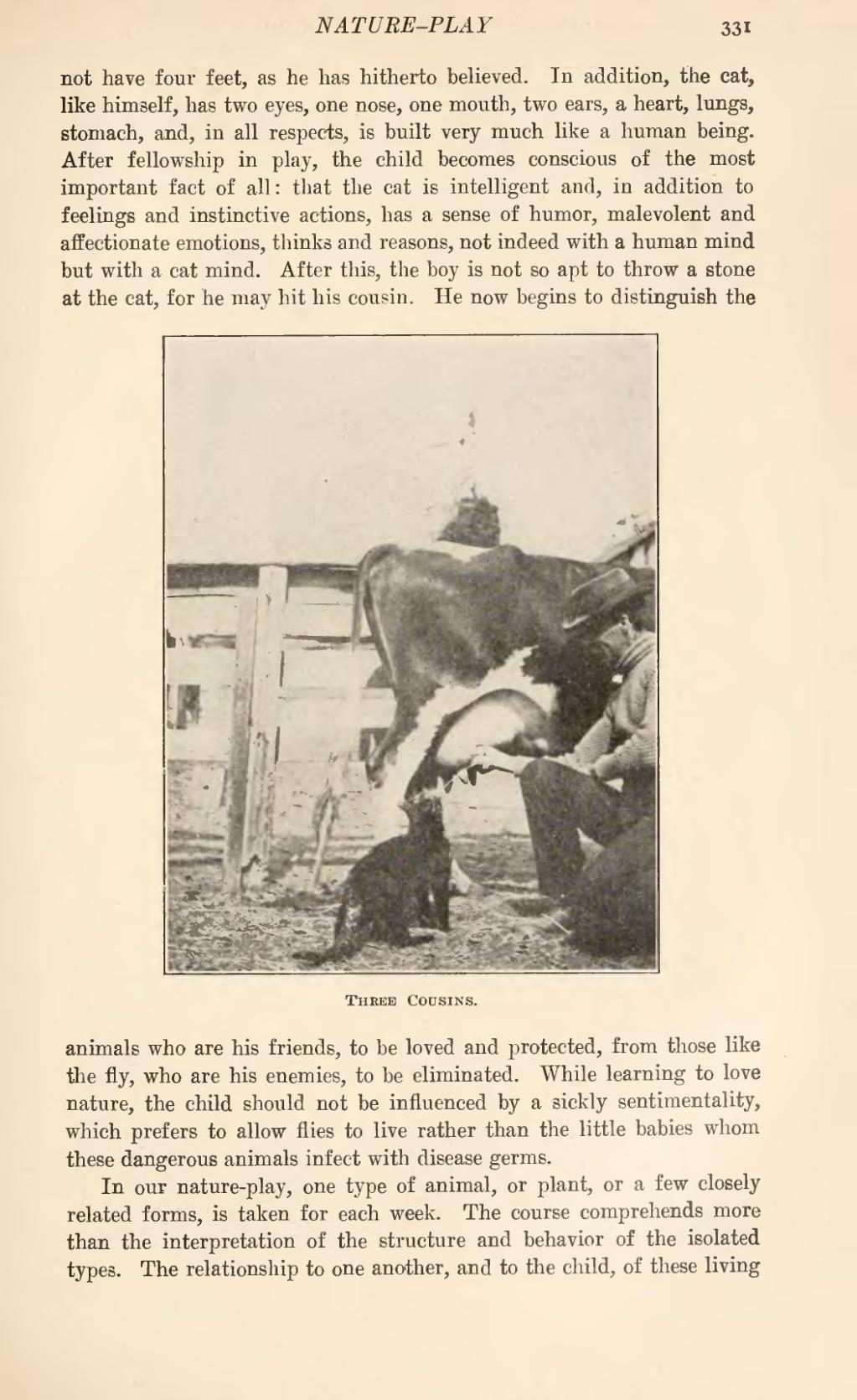not have four feet, as he has hitherto believed. In addition, the cat, like himself, has two eyes, one nose, one mouth, two ears, a heart, lungs, stomach, and, in all respects, is built very much like a human being. After fellowship in play, the child becomes conscious of the most important fact of all: that the cat is intelligent and, in addition to feelings and instinctive actions, has a sense of humor, malevolent and affectionate emotions, thinks and reasons, not indeed with a human mind but with a cat mind. After this, the boy is not so apt to throw a stone at the cat, for he may hit his cousin. He now begins to distinguish the
animals who are his friends, to be loved and protected, from those like the fly, who are his enemies, to be eliminated. While learning to love nature, the child should not be influenced by a sickly sentimentality, which prefers to allow flies to live rather than the little babies whom these dangerous animals infect with disease germs.
In our nature-play, one type of animal, or plant, or a few closely related forms, is taken for each week. The course comprehends more than the interpretation of the structure and behavior of the isolated types. The relationship to one another, and to the child, of these living


